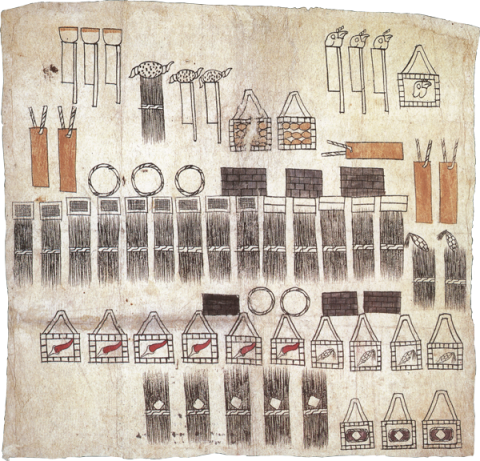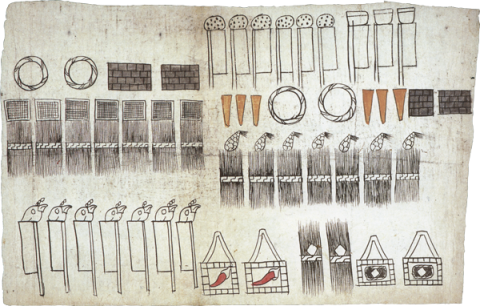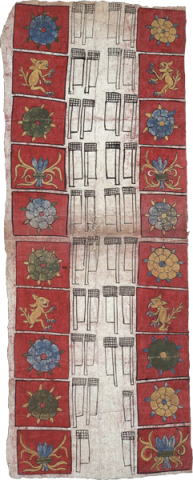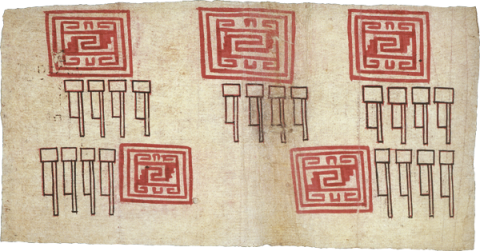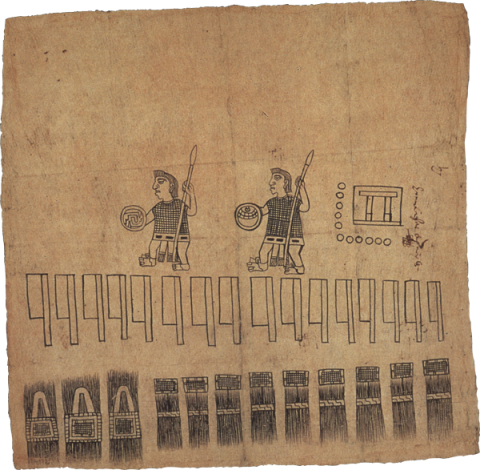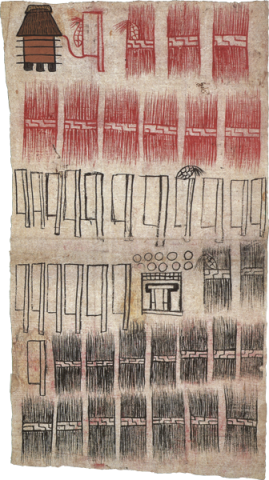This early post-contact codex, from the 1530s, was drawn and painted on eight sheets of amatl (amate in Spanish, fig bark paper). The eighth sheet is still forthcoming, and we may be renumbering the pages to coincide with the Library of Congress website, https://www.loc.gov/item/mss47662-2657/, where the manuscript is currently housed (in Washington, D.C.) The pictorial and accompanying documents contain arguments relating to a legal case from a town near Puebla, Mexico. These consist of complaints about labor and products provided in tributes to the Spanish colonizer and encomendero Nuño de Guzmán. This town was recruited by Hernando Cortés to present cases against the other Spaniard, who had become a member of the first High Court (Audiencia) and who had usurped some of Cortés’s wealth and power when he went to Spain (1529–1530). Upon his return, Cortés lobbied against Nuño de Guzmán, and the people of Huexotzinco joined in to complain about the heavy tribute demands of Nuño de Guzmán. The plaintiffs were successful in their suit both in Mexico and in Spain. In 1538 Charles V supported an earlier ruling that 2/3 of the tributes paid by Huexotzinco be returned to the community. As we will see, some of the tributes had benefited their own indigenous lord, not just the hated encomendero. (Introduction by Stephanie Wood, drawing from the Library of Congress information. See also the introductory video with John Hessler at the Library of Congress: https://www.loc.gov/item/webcast-8334/ (about 31 minutes). And here's a short video, about 3 and a half minutes, that has a little introduction to the MS: https://www.youtube.com/watch?v=DiiBQLIMirs. The Library of Congress has kindly provided the digital images for this reproduction in the Mapas Project. Ellen Heenan, at the University of Oregon, has processed the images using PhotoShop and has inserted them into our Filemaker Pro database so that they could be annotated (2015).
